Chapter: Biology: Natural Diversities of Bangladesh-Distribution of Plants and Animals
Coastal Forest or Mangrove forest
Coastal Forest or Mangrove forest:
Environmental Characteristics: In the coastal region of the Bay of Bengal thesoil is saline, muddy and water logged. Besides daily high and low tides is an important factor. All these environmental factors are unfavourable for plants.
To overcome these adverse conditions, plants, those grow here, develop certain
adaptations such as:
(1) Due to salinity of the soil their root cannot enter very deep in the soil. So to protect from wind and storm many plants (e.g. Sundari) develop root buttresses.
(2) Many plants (e.g. Boro) develop stilt roots.
(3) Due to inadequate oxygen supply in the soil many plants e.g. Sundari, Keora, etc. develop Pneumatophores or respiratory roots, originate from the underground horizontal branch roots lying parallel with the soil surface. There are air pores and air spaces in these respiratory roots, which help the exchange of gasses.
(4) As seeds are washed out by tides, in some plants there occurs viviparous germination. Hence seed germinates when it is in the fruits and fall on the earth when the root become elongated and heavy. Viviparous germination found in plants such as Boro, Khosi, Hargoja etc. Sundari and Geowa do not have viviparous germination.
Distribution of coastal forests:
Plants those are adapted in adverse coastal environment are known as mangrove. The forests, which develop by them, are called mangrove forest. In local language some times they are called 'Para-Bon' Sundarban in the southern part of Bangladesh and Chokoria Sundarban in the south-eastern region are natural forest. Besides these, forthe protection of coastal area from cyclone and tidal bore many mangrove plants areplanted along the seashore. This man made forest are termed as coastal afforestation. A description of these is given below:
Sundarban: Sundarban is the largest forest of Bangladesh. It comprises of land area of about 5100 square kilometer (2000 sq. miles), occupying the southern part of Khulna and south-western part of Potuakhali district. The river Baleshwar in the east, Raymongal in the west, country's main land in the north and the Bay of Bengal in the south surround the Sundarbans.
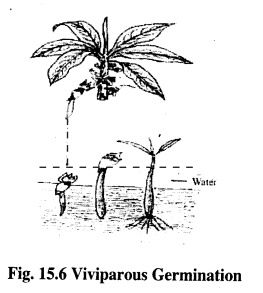
About 47% of the total forest area of the country, is occupied by the Sundarbans and more than 50% of the forest revenue is earned from the Sundarbans From this forest we directly get timber, fuel, fish, honey and wax. Every year 9,70,000 tons of Golpata (Leaf of Nipa fruticans, 220 tons of honey and 50 tons of wax are procured froms the Sundarban. Besides these the forest protect the locality from high waves of the sea.
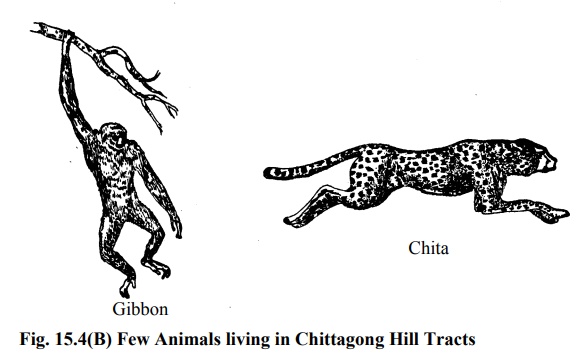
On the basis of the salinity the Sundarban is divided into three zones: - Non-Saline Zone: Usually the area near the rivers, canals and channels arenon-saline. Main plant of this area is Sundari(Heritiera fomes). Besides Geowa, Keora, Golpata, Amur, Hintal, Hargoja are also found to grow in abundance.
Mild Saline Zone: Main plant of this region is Geowa(Excoecaria agallocha)and among other plants there grow Pashur, Khapu, Kankra, Sada bain, Kala bain and Pakka Sundari.
Saline Zone: Major plants of this region are Garan, (Ceriops roxburghiana), Dhundal, Pashur, Kankra etc.
Major Animals Of the Sundarban:
Differrent species of animals live in this forest. Many of them are found only in the mangrove forest region. Some animals live within aerial or respiratory root area.
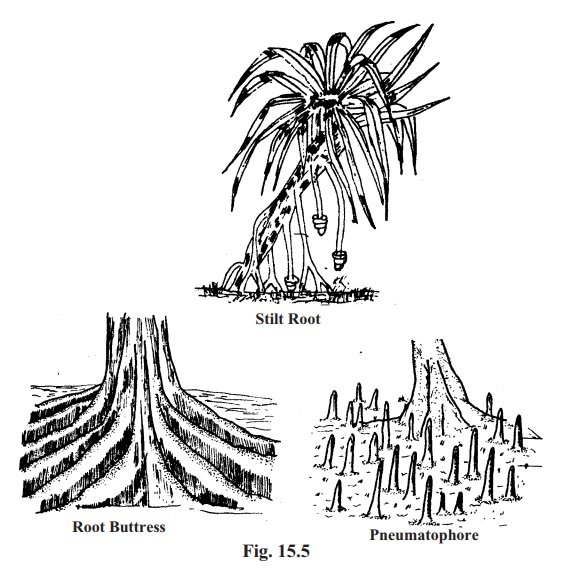
Abundant of red crab, shrimp and Chiring fish are found here. To move by jumping the pectoral fins of Chiring fish are specially developed. The notable animal of the Sundarban is the Royal Bengal Tiger (Panthera tigris, the National Animal of Bangladesh). This animal possesses as much strength as it is beautiful to look at. They are very brave and ferocious. Once this tiger lived throughout the whole continent of Asia. But this precious animal is now about to be extinct. Only about-200 tigers are now present in the Sundarbans. Besides this tiger, Otter, wildcat and cobra, pig, monkey and spotted deer are found to live there. There are big crocodiles in the rivers flowing through this forest. Large number of beehives are found in the Sundarbans from which a good amount of honey and wax are procured.
(2) Chakoria Sundarban: The mangrove forest situated in the estuary of theriver Matamuhuri in Cox's Bazar district is named as Chakoria Sundarban. It is now exists with less than half of its previous area.
Plants: Main plants of Chakoria Sundarban are Bain, Ora, Keora, Soilkata,Garan, Kankra, Hintal, Golpata, Hargoja, Kholshi, tiger fern Nonalata, Sundrilata and few Sundari (at present almost nil so to say). There is another mangrove forest on the bank of the Naaf River near Teknaf, but there is no Sundari (Heritiera fomes) tree.
Major Animals: Different species of fishes, snakes and birds are found there.
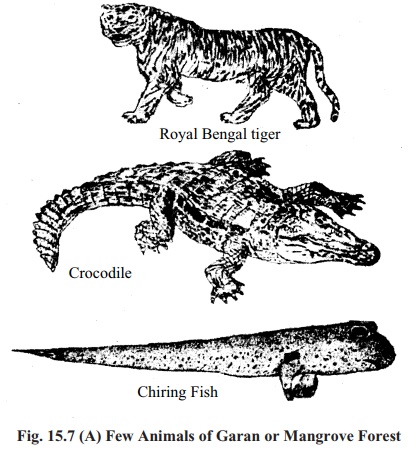
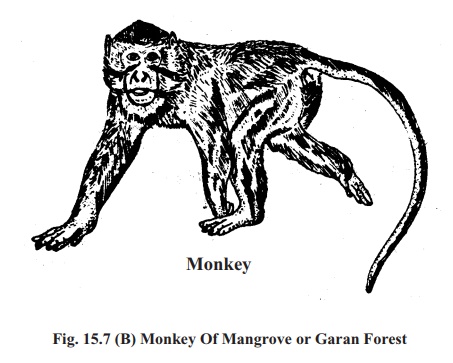
(3) Coastal Afforestation: To protect the lives and properties from successivecyclone and tidal bore in the open coastal region seedlings of mangrove plants have been planted along the coastal region. As a result an attractive forest has developed. Within a short span of time the soil of the areas has changed its quality and has become cultivable.
Plants: In coastal afforestation usually Bain and Keora are planted. Bain isplanted in the soil containing comparatively high salinity and Keora in the estuary region where saline water mix with river carried fresh water.
Related Topics